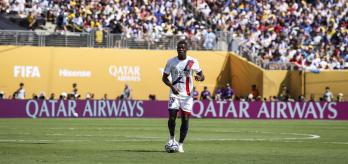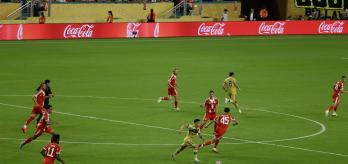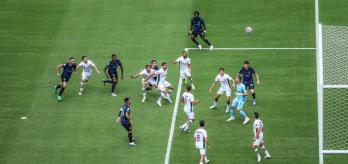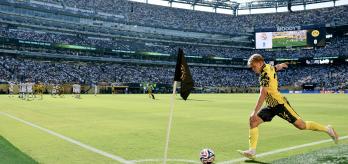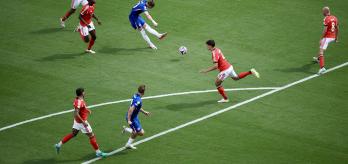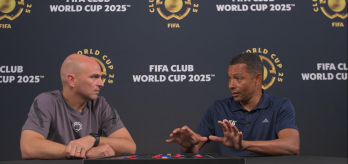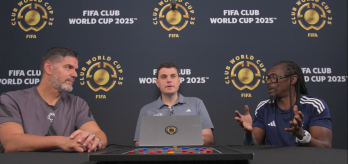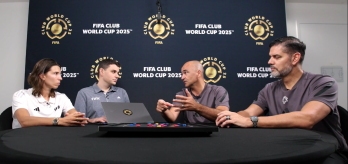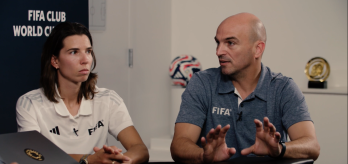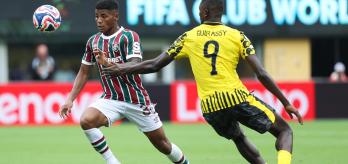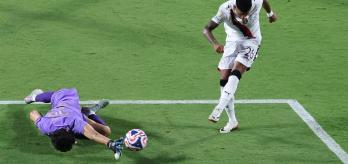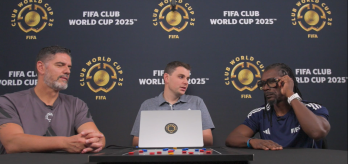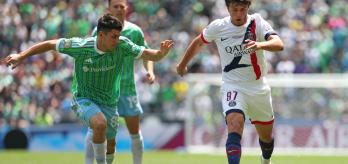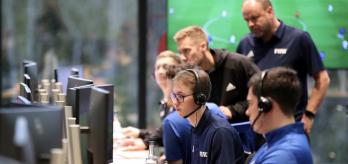Rotations and inverted full-backs have been two tactical elements embedded in both Chelsea and PSG’s in-possession strategies. Below, Technical Study Group member Roberto Martínez offers a tactical overview of the two European clubs and reveals why their fluidity makes them elusive when in control of the ball. The current Portugal head coach also shares why, although both teams may share the same idea of having flexibility in the way they occupy space across the pitch, the way their rotations function is due to the specific profiles of their players. This article is based on an interview with Martínez, where he discusses the tactical topics ahead of the Club World Cup final.
Martínez’s Final preview
Paris Saint-Germain’s dominance and Hakimi as crux
Apart from their 1-0 defeat to Brazilian side Botafogo in the group stage, PSG asserted their dominance at the Club World Cup, dispatching top sides such as Atlético de Madrid and FC Bayern München on their journey to the final. The Parisian club’s fluidity with the ball and their intensity without it are key contributors to their dominance, stresses Martínez.
“Regarding PSG, we are quite certain with what we’re going to expect: a team that is totally synchronised, playing with confidence and belief. On the ball, they’re very clear with what they do. They are starting to be a team where you know exactly what they’re going to do, but it’s very difficult to stop. They’ve got great variation and are fluent in their positions. The technical level of their team is exceptional – everyone can hold the ball. They are disciplined with their positioning, keeping width, always encouraging 1v1 situations and arriving with numbers in the penalty area. Without the ball, they are the most efficient team without a doubt. The way they press high, the way they are a very compact block – that intensity without the ball makes them a team at the highest level of the tournament.”
The seamlessness of PSG’s rotations often end with a penetrating run by right-back Achraf Hakimi (2) into the final third. Data from FIFA’s Football Performance Insights Team registered the Moroccan star’s positioning and contribution as his side’s point of attack. Per 60 minutes of effective playing time at the Club World Cup, Hakimi ranks first for the number of balls received after offering in behind the opposition’s defensive line, ahead of all his team-mates by a significant margin.
Referring to the above clip, Martínez highlights the coordination between Hakimi, his midfielder João Neves (87), and the two team-mates that ultimately join him in the opposition penalty area as essential preconditions for PSG’s fluid attacking system to work.
“This clip is very interesting about that position because, here, you see the understanding between João Neves and Hakimi, depending on who’s outside and who’s inside, they’re going to almost open the opposition. Real Madrid found it very difficult to track this run. Here, Hakimi plays inside and is allowed to go, and he, as a full-back, goes on the outside. Two wonderful one-twos, and he enters into the box with another two team-mates. To create a 3v2 in the opposition’s penalty area, coming from your half, shows good synchronisation and understanding of positions. It highlights that freedom of a right-back being able to be the furthest attacker.”
Chelsea FC’s rotations and differing player profiles
In Chelsea, Martínez sees a team that has reconfigured itself throughout the competition. Despite changes in personnel, certain players are integral to the style of play pursued by Spanish head coach Enzo Maresca.
“Chelsea are a completely different team. We’ve seen them growing. The coach, Maresca, has used a lot of players – the largest number of players in the tournament – and I think we’re clear now with what they are going to do on the ball. They have the pace of Christopher Nkunku and Pedro Neto; the creativity of Enzo Fernández and Cole Palmer; the balance of Moisés Caicedo, and the flexibility of a back-three including Marc Cucurella.”
Regarding the rotations Chelsea used during the Club World Cup, Martínez believe the English club have shared the same principle as PSG, striving for dynamism and fluidity in the way they occupy space on the pitch. Also like PSG, Chelsea’s full-backs play a central role in achieving this by rotating into areas of the pitch which are significantly different from where they may be expected to be positioned when defending. However, where and how they contributed in their rotations differ due to their full-backs’ profiles.
For example, while Hakimi acts as an extra player to enter the final third and penetrates the penalty area as his team’s point of attack, Chelsea right-back Malo Gusto ventures centrally to operate as a playmaker, harnessing the French player’s ball-playing abilities. As Martínez explains, “The concept is the same, but the execution is totally different.” Chelsea’s left-back Cucurella, at times, ventures up the inside-left channel into pockets of space between Chelsea’s midfield and attacking lines to overload central areas, in positions typically adopted by a number 10.







